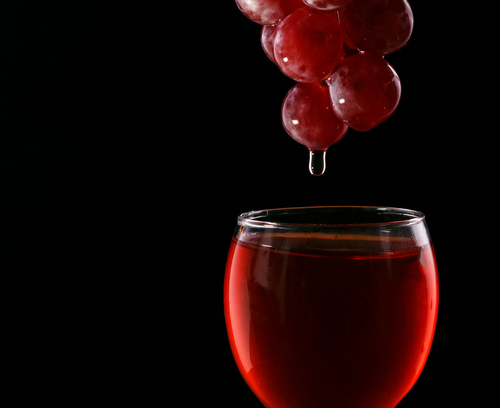
29 Jun A crash course in the better aspects of wine
Have you ever asked yourself what you’re supposed to search for when the server pours wine into your glass? Or had a mild panic attack when a clerk in a wine shop asks you what you’re looking for?
Even though you know next to zero about wine, you still need to be able to order a glass. Have a look at our guide to forging your way through your next dinner date, from a few wine words to know to connoisseur-worthy deals. And if you’re approaching a wine snob at your next cocktail party, you may even be able to teach ’em a thing or two.
Wine Terms to Know
If you wish to seem like you know wine, it’s good to have a few terms in your vocabulary to talk about what you like or don’t like. That California Chardonnay? It’s buttery, creamy, and round.
As for red, an Australian Shiraz is also pretty fruity, even jammy (that big fruit flavor really packs a punch), while a Cabernet Sauvignon from France’s Bordeaux is more tannic, that quality that can make a red wine taste a little rough but gives it the structure it needs over time to smooth out and age. Once you use these words, you may even start to notice trends in the wines you like (fruity, earthy, and did I just get a whiff of chocolate?).
Old World versus New World.
Winemaking differences aside (and there are many), the main point of distinction for you when picking up a bottle is whether the appellation or variety is listed on the label. It’s good to know that wine labeling falls into two camps: Old World (mostly Europe) and New World (everywhere else). New World wines are fairly straightforward, listing the grapes (or the one that’s in the majority) right on the label: Cabernet Sauvignon, Chardonnay, Sauvignon Blanc, you get the point. If you want to know if it was aged in oak or stainless steel, you may have to read the back label closely to get more information about the style.
Old World wines make you think a little harder. They will list the appellation, not the grape, which means that a little knowledge about that place, tells you not only the grape (or grapes) but also the style. A good non-vintage Champagne will be a blend of Chardonnay, Pinot Noir, and Pinot Meunier, and it’ll have aged at least 15 months in bottle, if not longer. Well-known regions you should know? Chablis, an unoaked Chardonnay from northern Burgundy; Sancerre, a minerally Sauvignon Blanc from the Loire Valley; and Chianti, an acidic red wine made of the Sangiovese grape from the Italian region that happens to go great with food.
Quick Label Identification.
It does help to know a little bit about what you’re looking at when you check out the label. Both Old World and New World wines will list the producer name (Robert Mondavi), vintage (2010), and alcohol by volume percentage (13.5%). The region is listed as well, and it’s a pretty good indicator of the quality level of the wine– the more vague (California) will be a more entry-level wine, while a more specific notation (Napa Valley, Single Vineyard) means the grapes are from a concentrated vineyard area with a higher quality control.
Do Hold by the Stem.
There are a lot of thoughts and opinions on the temperature at which red wine versus white wine should be served. Although it varies by grape and style, whites generally are chilled, while reds are served a little below room temperature. Especially if you’re in a fancy restaurant or at the home of a wine connoisseur, the way you hold your glass of wine tells a lot about your level of knowledge. How to appear like you know what you’re doing? Regardless of what the wine, hold the glass by the stem, instead of gripping the bowl– it keeps the temperature of the wine the way it should be longer. And whatever you do, don’t put ice in your glass, unless it’s filled with water.
No More Nouveau.
There are lesser-known regions producing killer wines for a better price than a Chateau Lafite if you want to play the savvy French wine snob who knows a deal. These wines are some of the best wines for the best price coming from France, and you’ll look like you have the inside scoop. Like lighter reds? Look for wines from the Beaujolais– no, not the yellow-labeled Nouveau that comes out in November. You want wines from the Crus regions, like Fleurie, Morgon, and Régnié, elegant reds made from the gamay grape, Pinot Noir’s redheaded stepsister. For fresh whites, try Sancerre’s neighboring towns like Quincy, Pouilly-Fumé, and Touraine. They’ll share some of those minerally aspects of the famous Sauvignon Blanc at a more approachable price. Still hankering for that Lafite? The Côtes du Rhône region makes gorgeous, rich, full-bodied reds from north to south, from Cornas to Vacqueyras.
Ask a Sommelier.
Ever been confronted by a book rather than a simple wine list? If you want to act like you know what you’re doing, then quit pretending and ask an expert. Every restaurant’s sommelier or beverage director intimately knows the wines on their list and can recommend wines at your price point and to your taste (same goes for your local wine shop).
But, no, you cannot just send it back if you don’t like it. When in doubt, ask for a taste of something off the by-the-glass menu and then order the bottle if you like it.


